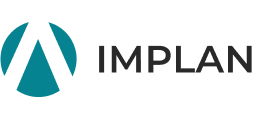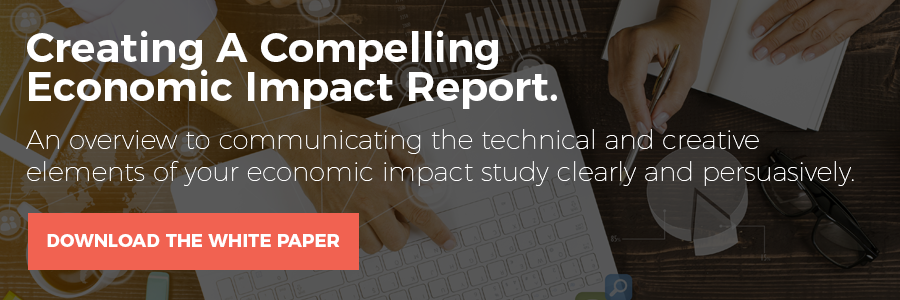Introduction
Economic impact analyses present a relatively new and unique way of looking at the complexities of a region’s spending (though the theory behind the methodology is in its golden years, the technology is barely decades old and constantly evolving). And, like most other highly academic and technical research methods, the presentation of results can tend toward the bland, less accessible side of the spectrum. But researchers are relying on a time-honored technique for helping people get excited about economic impacts—storytelling. Here, we review the storytelling tactics employed by the Charlotte Housing Authority to communicate the results of their economic impact study in an engaging manner.
Laying the Groundwork
Executive Summary
 The Charlotte Housing Authority (CHA), in both their Economic Impact Brochure and Economic Impacts of the Charlotte Housing Authority (2009 – 2014) report, succinctly state their legacy, mission, and impetus for examining their economic impact on the city of Charlotte through CHA’s operations and many urban revitalization, construction, and housing projects.
The Charlotte Housing Authority (CHA), in both their Economic Impact Brochure and Economic Impacts of the Charlotte Housing Authority (2009 – 2014) report, succinctly state their legacy, mission, and impetus for examining their economic impact on the city of Charlotte through CHA’s operations and many urban revitalization, construction, and housing projects.
Interpreting Results
CHA creates a consistent rhythm of presenting the results of their programs as a cascade of effects which start with initial investments which then support jobs, employee compensation, and economic output. This chain of effects appears throughout the report to establish a cadence for the reader to easily follow.
Building The Story
Methodology and Detailed Inputs
CHA publishes their operating budgets (including draft versions) annually on their website. Their annual budgets and plans, broken out by programs and operations, serve not only as inputs which translate easily into the modeling software, but also help establish a thread which links CHA’s mission to economic impacts program by program and dollar by dollar.
Structural Elements

In addition to the consistently contextualized results mentioned previously, CHA digests the 41-page study into a 12-page brochure which presents key findings from the economic impact analysis folded together with other impacts (including social and municipal effects) in a way that emphasizes that CHA is holding to its mission of helping Charlotte residents become self-sufficient.
Storytelling by Design
CHA’s mode for presenting its economic impact results emphasizes their narrative through a design which draws attention to impact numbers (denoted by hexagonal cartouches), expenditure flow (visualized in charts), and statistics (presented with illustrations or icons). These design elements act as a strong and simple visual vocabulary which helps the reader navigate effectively through page after page of facts and figures (without overwhelming them).
Winning Strategy

Though seemingly simple, the three sentences in the Message from the CEO which state the study’s intent, top-line result, and allusion to the detailed version of the report resurface from page to page in the structure of the report, establishing both continuity and credibility.
Forward-Thinking
That through-thread appears from page to page as the impact of each program is introduced as supporting the overall mission, each providing a significant economic impact of their own through visually arresting results and footnotes which explain nuances in the study (or link to the full study online).
In the concluding Overview section of the brochure, CHA emphasizes that fulfilling its mission produces economic impacts in the form of jobs, wages, and local spending. It expands the significance of those economic benefits by calculating for the reader exactly how much money their programs save per person per year in the study region (when supportive housing is provided for homeless citizens) down to the dollar.
Conclusion and Follow-Through
How the study helped get results
CHA saw support for its programs in the form of increased grant funding swell between 2015 and 2018 as a result of its thoughtful reporting and campaign to get the news out to the community about CHA’s economic significance to the Mecklenburg area.
Folding elements of storytelling into an economic impact analysis isn’t on its own a panacea. But those who have crafted their studies using storytelling techniques have found their work to be more engaging, memorable, and shareable for their readers. Though seemingly superficial, framing the analysis within a story has proven to be a humanizing and effective way of getting legislative traction for causes, funding for programs, and interest from communities on the whole and for the better.
Hungry for more?
See how other organizations used the storytelling techniques described above as well as a few other clever tricks of their own. Click on the logos below to read more:








